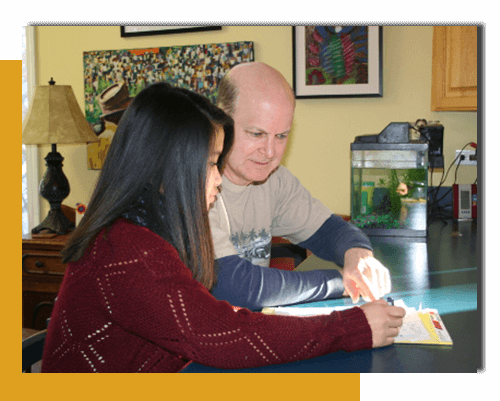
Parents
STEM At Home

STEM is all around your home.
Cooking, repairing a bicycle, gardening, helping you fix the toilet, taking care of a fish tank – these are all activities that could be suitable for your child. Think of others that involve observing, asking questions and defining problems, looking for evidence, evaluating information, planning and investigating, measuring, using tools – all practices of scientists and engineers – that you can do at home. Encourage scientific play in young children. For example; provide water, vegetable oil, food coloring, and a bowl in a “mess allowed” area of the kitchen.
Invite questions.
Children are naturally curious. Seek out answers to their questions together. Model lifelong learning by exploring the internet together, or taking a trip to the library. Look for questions and answers everywhere: your yard, a park, or a museum. Be creative and you will probably learn, too.
Provide a good school-study environment, talk about school, and start early.
- A desk or table space, good lighting, and a quiet environment are important for working on homework. Suggest that the student remove themselves from unnecessary electronics. Offer assistance, but know when to let them solve a problem by themselves.
- Research shows that middle school is very important for developing engagement, interest, and confidence in mathematics and science. Encourage student interests and refrain from enabling comments like, “Lots of people are bad at math.”
- Ask your child to tell you what she is doing in school. Is she struggling? Can you explain something to him? Can he explain something to you? Talk about both challenges and successes.
- Help your child make good educational choices and find connections among classes and real life.

You are important in your child’s extracurricular education.
- Plan trips to museums, activity centers, nature preserves, national parks, and zoos. Schedule factory tours. See the Places to Go page in the Student section of this website for specific suggestions.
- If you watch TV, watch together and offer something stimulating. Talk about the programs you view.
- Encourage participation in clubs, scouting, camps, and other informal learning opportunities. See what your park district and local library have to offer. Community colleges frequently offer kids’ programming, as well.

More ideas for things you can do at home:
A wide variety of self-led programming tutorials for grades 2+. Activities range in difficulty from drag-and-drop commands to guided coding in Javascript.
Reviews for kids’ movies, TV shows, books, apps, games and podcasts
More movie suggestions, articles, activities, and a subscription newsletter
Project ideas for STEM at home:
District 207’s Summer STEM Camp. Check out your school district, park district and library for camps.
Books and crafts to promote STEAM (This acronym includes the “Arts” with STEM)
A range of fun experiments you can do at home
Design, build, watch, play!
Activities, experiments, videos & more. Math & English activities can be found here, too.
Advertised for girls, but ideas for everyone. Programs, activities and resources are at this site.
Games, videos and hands-on activities, from Chicago’s Museum of Science and Industry
Lots of do-at-home demonstrations and experiments, from the University of Wisconsin
Games, puzzles, videos, explore and subscribe!
See also the Parent Resources page on our website.
